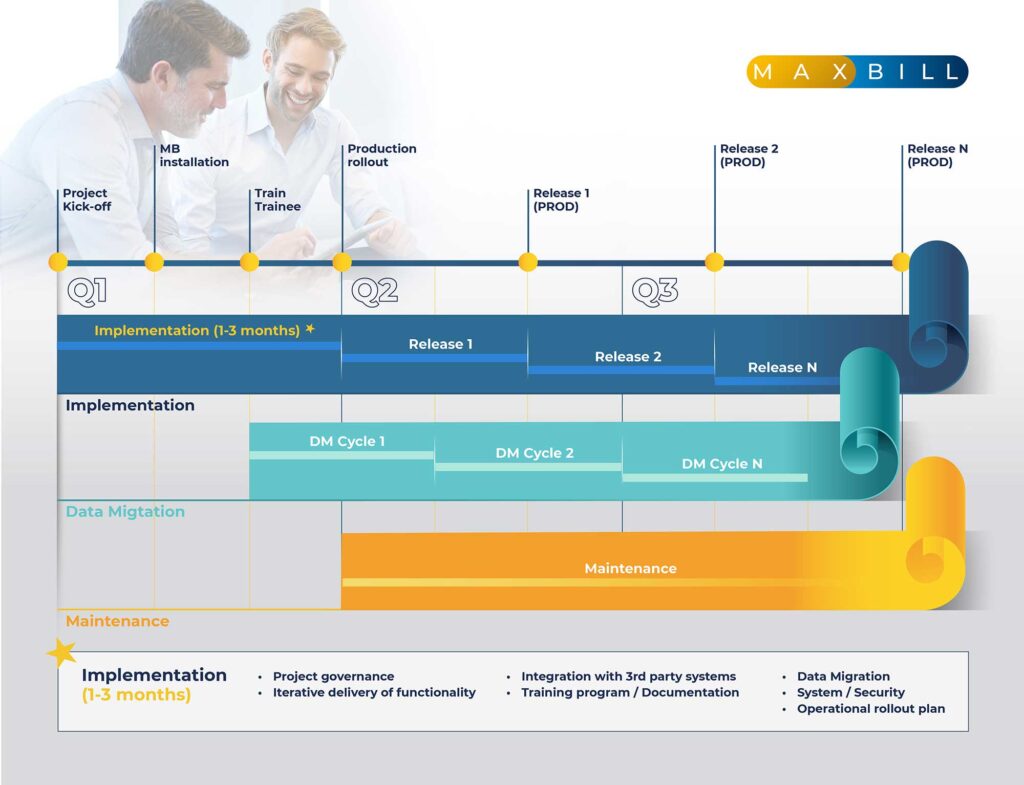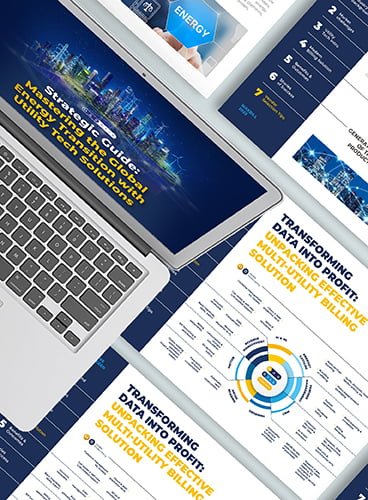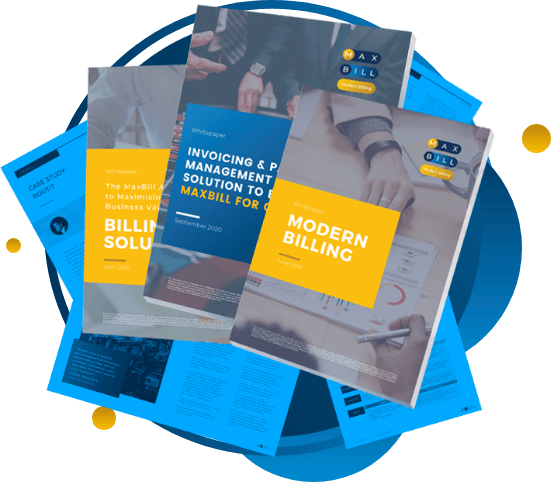MaxBill’s clients, even being from the same vertical or niche, all come with their specifics. This means that every roadmap of B2B SaaS billing system implementation differs based on the size of the project, its complexity, budget, and scope.
However, in this piece, we strive to explain MaxBill’s universal methodology of the fast implementation project, based on SaaS out-of-the-box approach. This approach is suited for projects where accurately estimating the project’s size is challenging or where requirements are expected to evolve significantly over time.
In this piece, you will find the high-level description of project activities, governance and management procedures of the fast MaxBill solution implementation. You will discover its signature “know-how” approaches to project control and quality management that ensure the project is being developed as it is planned.
Last but not least, you’ll get answers to the most common questions that decision-makers often ask.
Now, let’s get down to processes.
MaxBill fast SaaS billing implementation explained
What do energy and utility companies need to know about this methodology? Here are the top 5 points to know for CEOs, CIOs, and CTOs:
– while the client receives initial estimates and timelines, these are revisited and adjusted after each iteration, ensuring flexibility
– dynamic project implementation by allowing changes and improvements throughout all project stages, including advanced phases
– features can be added or removed based on evolving requirements, with work beginning as soon as business needs and key functionalities are defined
– development is organized into short sprints, each delivering an MVP followed by testing to ensure alignment with business objectives
– this iterative process enables adjustments, pivots, or complete reworks based on ongoing outcomes and evolving insights
Payments are made based on work delivered, with each iteration culminating in a production roll-out, enabling continuous value delivery and iterative refinement.
Implementation breakdown in milestones

For the first Implementation stage, MaxBill OTB solution implementation concept comes with clearly defined objectives and outcomes to achieve, timelines, implementation methods and deliverables.
At this point, the primary objective is to establish the client’s confidence in the contractor’s ability to successfully deliver the proposed system, ensuring a reliable and efficient partnership.
This includes verifying that the MaxBill solution is both modern and adheres to industry standards, thereby showcasing its capability to meet the Client’s operational needs.
Additionally, the preparation of the client’s team for the forthcoming system implementation is a key priority, ensuring they are equipped with the knowledge and structure needed for a seamless transition.
Simultaneously, it is crucial to define the scope of work for the Minimum Viable Product (MVP), including its configuration, interfacing, and localization requirements. This will provide a solid foundation for the system’s initial functionality while aligning expectations.
Furthermore, the exercise will outline the high-level scope for subsequent releases, establishing a clear roadmap for future development phases. Together, these objectives aim to create a comprehensive, transparent, and forward-looking framework for successful project execution.
What do clients get after the implementation phase?
At the end, the client gets a fully installed MaxBill system, laying the foundation for their operations. The initial implementation stage is clearly defined with a comprehensive and detailed scope, ensuring all stakeholders are aligned on the deliverables.
The MaxBill system is configured according to the established MVP, providing a tailored solution that meets the Client’s immediate requirements.
Additionally, the system is operational in Production for new customers, marking a significant milestone in the project. The migration of existing customers begins in segmented phases, ensuring a smooth transition with minimal disruption.
Furthermore, the high-level scope for the next release is outlined, offering a clear roadmap for future enhancements and sustained operational success.
Methods and deliverables of the execution phase
With the foundation established through the initial implementation and the MVP configuration, the focus shifts to the methods and deliverables that will drive the successful rollout of the billing system.
These methods are designed to ensure a structured, collaborative, and efficient approach, aligning the technical implementation with the сlient’s operational objectives while minimizing risks.
The methods represent:
- Project governance
- Iterative delivery of functionality
- Integration with 3rd party systems
- Training program / Documentation
- Data Migration
- System / Security
- Operational rollout plan
Let’s stop on some of them.
MaxBill “know-how’ to project governance: Light Gating Policy
A signature MaxBill’s Light Gating Policy was designed based on gating policies already existing in the industry. But the team has modified and perfected based on experience of what serves best for the client and project implementation un general.
Thus, the Gating Policy strikes a strategic balance between project speed, budget efficiency, and the necessary level of project control, ensuring that oversight is both effective and aligned with the required project artifacts.
Such a framework includes the following decision points or ‘gates’ (high-level description:
Gate 7 – Project Kick off with Contracting Organisation
Gate 6 – Project Lock down
Gate 5 – Detailed Plans Complete
Gate 4 – Begin Validation
Gate 3 – Begin First Office Application
Gate 2 – General Availability
Gate 1 – Post-implementation review
Each gate contains objectives defined and a review board (previously assigned group of people) that makes decisions that all related artifacts are delivered, and it is possible to proceed to another gate.
MaxBill ‘know-how’ to quality control: Quality standards
MaxBill possesses a superior quality control. Our know-how is the quality standards. The team has developed the scale of quality standards for every project and project history.
Throughout the process, teams have to test every delivery, which sometimes does not need that deep and expensive performance testing (esp. when it’s about some minor modification).
So, in order not to get confused about which tests to do where and when, the team chooses the appropriate quality standard, based on the developed scale.
Please reach out to our pros for more detailed info in the context of your existing ‘billing SaaS need’.
Data migration within SaaS billing implementation process
Obviously, data migration is initiated at the stages of development and configuration. But the actual one for the production purpose is performed during the production roll-out plan execution.
MaxBill possesses data migration methodology and tools for data importing and validating. The approach contains 6 core aspects, incl., picking the best migration scenario for this particular client and project.
The entire process embraces the following processes in general:
- Data migration plan
- Dada migration scope definition (e.g., Domestic and SME customers will be transitioned from a single legacy system.)
- Roles and responsibilities.
Integration with 3rd party systems
During the design stage, MaxBill determines the precise integration methods and solutions by analyzing the Client’s system interfacing capabilities and the requirements outlined in the Statement of Work. The deliverables for this stage will include an “Integration Concept Diagram” and detailed interface descriptions, structured in the specified format.
How is an easy integration achieved?
The MaxBill solution ensures seamless integration with third-party systems through its robust integration framework, which includes an Interface Server Module, Open APIs, and a Kafka-based messaging bus.
This framework leverages modern micro-services architecture, providing RESTful APIs for easy access to major objects and functions without requiring source code modifications.
Additionally, the interface server’s web console enables remote monitoring, workflow configuration, and interface management, while specialized APIs for CRM, Order Management, Auth, and Bill Formatting support integration with external platforms such as web portals, mobile apps, and ERP systems. This comprehensive approach ensures flexibility, scalability, and efficient data exchange.
Training the client’s trainers
The MaxBill team begins training the client’s team early in the installation process, ensuring a clear understanding of the project’s baseline. This approach enables the client to make informed decisions about the essential features required to establish a functional Minimum Viable Product (MVP), optimized for smooth system performance with minimal complexity.
MaxBill provides product documentation and training materials that cover use, administration and configuration topics.
If you have any questions regarding the implementation of a modern billing and CRM solution, reach out to our pros.
Frequently Asked Questions
What are the phases of integration and who is involved in each phase?
The integration process includes several key phases:
- Design Stage: MaxBill defines integration methods and creates the “Integration Concept Diagram” with interface descriptions. Involved parties include the MaxBill team and the client’s technical stakeholders.
- Development and Configuration Stage: Integration solutions are developed based on the interfacing capabilities and requirements. Both MaxBill’s developers and the client’s IT team collaborate.
- Production Rollout: Actual integration with third-party systems and data migration takes place. This involves MaxBill, system integrators, and the client’s operations team.
System integrators, where do they come in?
System integrators play a critical role during the Production Rollout Phase, where they ensure that third-party systems, such as CRMs, ERPs, or mobile applications, are effectively integrated into the MaxBill framework. They help configure APIs and ensure smooth communication between systems.
How does responsibility shift between a client and MaxBill at different stages of transformation?
Early Stages (Design and Development): MaxBill takes the lead in defining integration methods, project governance, and training the client’s team.Implementation and Rollout: Responsibility gradually shifts towards the client as their team becomes prepared to operate and maintain the system independently, supported by MaxBill’s training and documentation.Post-Implementation: The client assumes full ownership of operations, with MaxBill providing ongoing support if needed.
How does MaxBill manage expectations at the earliest stages of interaction with the audience?
MaxBill manages expectations by providing initial project estimates and timelines, which are revisited and adjusted iteratively. Additionally, the “Integration Concept Diagram” ensures clarity regarding system scope and integration requirements, fostering transparency and trust.
How and when are needs analyzed, and how is the infrastructure prepared?
Needs are analyzed during the Design Stage, where MaxBill assesses the client’s system capabilities and the Statement of Work (SOW). The infrastructure is prepared through iterative development, with testing and adjustments ensuring readiness for integration.
How to ensure the system integrates well with other systems, and what systems are involved?
Integration is achieved through MaxBill’s robust integration framework, leveraging Open APIs, RESTful interfaces, and a Kafka-based messaging bus. Systems commonly integrated include CRMs, ERPs, web portals, and mobile applications. The framework ensures scalability, flexibility, and secure data exchange.
How are testing and data validation organized: regular performance checks and device calibrations, ensuring data accuracy?
Testing and validation occur at each project stage, with quality control standards determining the depth of testing. Data validation is carried out during data migration, using MaxBill’s proprietary tools to ensure accuracy and reliability. Performance checks are conducted during every iteration to align with business objectives.
What about security: implementing solutions to protect against cyber threats and data privacy?
MaxBill incorporates security measures during system design and implementation, such as secure APIs, access controls, and data encryption. The Light Gating Policy ensures compliance with industry standards, while ongoing monitoring safeguards against cyber threats and ensures data privacy.
How and when are needs analyzed, and how is the infrastructure prepared?
Needs are analyzed during the Design Stage, where MaxBill evaluates system capabilities and project requirements. The infrastructure is prepared iteratively, with short development sprints allowing for continuous testing, feedback, and necessary adjustments.






























